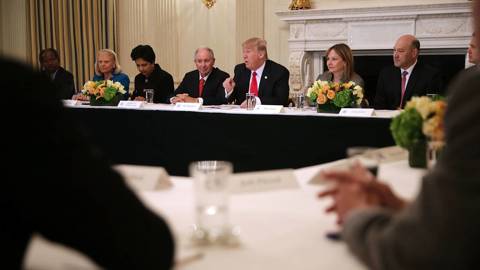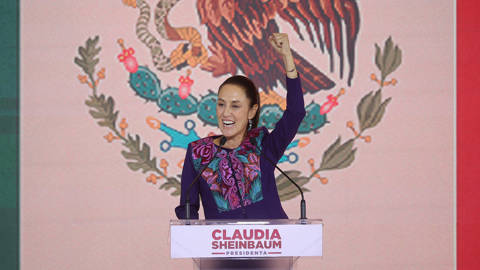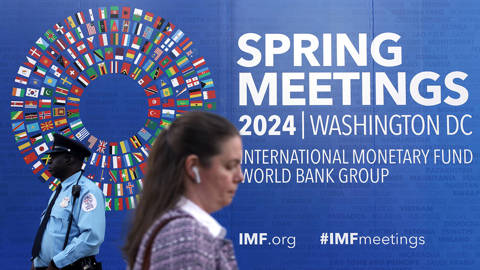The Chinese government has signaled that it is beginning its exit from expansionary measures aimed at mitigating the impact of the global financial crisis and recession. A change of policy can't come soon enough: China’s long-term growth prospects may be seriously affected if the authorities fail to tackle the economy’s structural problems head on.
BEIJING – China’s “Central Economic Work Meeting,” comprising top government decision makers, recently chose to continue the expansionary fiscal and monetary policy launched in the last quarter of 2008. But it also called for greater emphasis on transforming China’s development pattern and rebalancing its economic structure.
The move thus signaled the start – well ahead of other countries – of China’s “exit” from crisis-driven economic policies. Indeed, China should accelerate its change of course. While expansionary policies have succeeded in ensuring a V-shape recession, their medium and long-term effects are worrisome.
First, China’s crisis management has made its growth pattern, marked by massive investment demand, even more problematic. China’s investment rate is extremely high in comparison with other major economies, and has been increasing steadily since 2001, creating first overheating and then overcapacity. Until the global financial/economic crisis that began in 2008, however, strong export performance concealed China’s overcapacity problem, which, thanks to the stimulus package, is now set to become more serious. Indeed, China’s investment rate may have surpassed 50% in 2009.
Second, China’s external imbalance may also worsen. Trade and exports accounted for 67% and 37% of the country’s GDP, respectively, before the global crisis, but have since fallen significantly. And yet reliance on external demand remains fundamentally unchanged, even as the contribution of net exports to GDP growth has turned negative. In fact, worsening overcapacity, together with all the many types of price distortions still in place, may push Chinese enterprises to boost production for export markets, like the United States, where protectionist tendencies are likely to intensify in 2010 and onwards.
Third, China’s financial stability and fiscal position may deteriorate in the medium term. The government, well aware of the overcapacity problem, focused the country’s stimulus package on investment in infrastructure, rather than new factories. But infrastructure is a long-term investment, revenues from which will be lower without accompanying investment in manufacturing capacity. An eight-lane highway must carry traffic to generate tolls.
Moreover, due to hasty and poorly supervised implementation, waste in infrastructure construction can be serious. With an investment rate of 50% and a GDP growth rate of 8%, the incremental capital-output ratio could be higher than six, compared to 4.1 in 1991-2003, implying not only low efficiency, but also the possibility of a significant increase in nonperforming loans.
Finally, monetary policy has been far too loose. Unlike the US, China did not suffer from a liquidity shortage and a credit crunch during the global financial crisis. Thus, low interest rates and non-market interference, rather than demand from enterprises, fueled explosive credit growth in the first half of 2009, surpassing the full-year target. If commercial banks had been allowed to base lending decisions solely on economic considerations, credit and money supply would have grown more slowly, limiting the risk of rising bad-loan ratios, stalled enterprise reform, inflationary pressure, and a resurgence of asset bubbles as excess liquidity enters equity and real-estate markets.
Indeed, China’s housing prices have been skyrocketing in recent months. The government was too generous in helping revive real-estate demand, and, overwhelmed by fear of the negative impact of falling asset prices on economic growth, has been too cautious in dealing with bubbles when they have reappeared. With the housing sector accounting for 10% of GDP and investment in real-estate development accounting for 25% of total fixed investment, any decision to rein in runaway housing prices will be difficult.
All in all, the negative impact of the Chinese government’s crisis-management measures on China’s long-term growth may be serious if the authorities fail to tackle the economy’s structural problems head on. But it is also worth noting that the government is well aware of the problems, and has begun to take measures to put structural adjustment back at the top of the policy agenda.
In 2010, for example, the government may seek to stimulate domestic consumption by making income distribution more favorable to the household sector relative to the enterprise sector, and by providing more public goods to reduce households’ precautionary savings. Certainly, without a more equitable income distribution, official talk of creating a “harmonious society” will sound empty. Furthermore, the government should continue to eliminate price distortions by creating more flexible mechanisms, including for the exchange rate.
The government’s goal should be to succeed not only in reviving the economy, but also in reversing the deterioration of China’s structural problems, thereby laying a solid foundation for economic growth in the future. In this respect, the Chinese have good reason to be optimistic, for their country has defied predictions of economic demise repeatedly over the past three decades.









BEIJING – China’s “Central Economic Work Meeting,” comprising top government decision makers, recently chose to continue the expansionary fiscal and monetary policy launched in the last quarter of 2008. But it also called for greater emphasis on transforming China’s development pattern and rebalancing its economic structure.
The move thus signaled the start – well ahead of other countries – of China’s “exit” from crisis-driven economic policies. Indeed, China should accelerate its change of course. While expansionary policies have succeeded in ensuring a V-shape recession, their medium and long-term effects are worrisome.
First, China’s crisis management has made its growth pattern, marked by massive investment demand, even more problematic. China’s investment rate is extremely high in comparison with other major economies, and has been increasing steadily since 2001, creating first overheating and then overcapacity. Until the global financial/economic crisis that began in 2008, however, strong export performance concealed China’s overcapacity problem, which, thanks to the stimulus package, is now set to become more serious. Indeed, China’s investment rate may have surpassed 50% in 2009.
Second, China’s external imbalance may also worsen. Trade and exports accounted for 67% and 37% of the country’s GDP, respectively, before the global crisis, but have since fallen significantly. And yet reliance on external demand remains fundamentally unchanged, even as the contribution of net exports to GDP growth has turned negative. In fact, worsening overcapacity, together with all the many types of price distortions still in place, may push Chinese enterprises to boost production for export markets, like the United States, where protectionist tendencies are likely to intensify in 2010 and onwards.
Third, China’s financial stability and fiscal position may deteriorate in the medium term. The government, well aware of the overcapacity problem, focused the country’s stimulus package on investment in infrastructure, rather than new factories. But infrastructure is a long-term investment, revenues from which will be lower without accompanying investment in manufacturing capacity. An eight-lane highway must carry traffic to generate tolls.
Moreover, due to hasty and poorly supervised implementation, waste in infrastructure construction can be serious. With an investment rate of 50% and a GDP growth rate of 8%, the incremental capital-output ratio could be higher than six, compared to 4.1 in 1991-2003, implying not only low efficiency, but also the possibility of a significant increase in nonperforming loans.
SPRING SALE: Save 40% on all new Digital or Digital Plus subscriptions
Subscribe now to gain greater access to Project Syndicate – including every commentary and our entire On Point suite of subscriber-exclusive content – starting at just $49.99.
Subscribe Now
Finally, monetary policy has been far too loose. Unlike the US, China did not suffer from a liquidity shortage and a credit crunch during the global financial crisis. Thus, low interest rates and non-market interference, rather than demand from enterprises, fueled explosive credit growth in the first half of 2009, surpassing the full-year target. If commercial banks had been allowed to base lending decisions solely on economic considerations, credit and money supply would have grown more slowly, limiting the risk of rising bad-loan ratios, stalled enterprise reform, inflationary pressure, and a resurgence of asset bubbles as excess liquidity enters equity and real-estate markets.
Indeed, China’s housing prices have been skyrocketing in recent months. The government was too generous in helping revive real-estate demand, and, overwhelmed by fear of the negative impact of falling asset prices on economic growth, has been too cautious in dealing with bubbles when they have reappeared. With the housing sector accounting for 10% of GDP and investment in real-estate development accounting for 25% of total fixed investment, any decision to rein in runaway housing prices will be difficult.
All in all, the negative impact of the Chinese government’s crisis-management measures on China’s long-term growth may be serious if the authorities fail to tackle the economy’s structural problems head on. But it is also worth noting that the government is well aware of the problems, and has begun to take measures to put structural adjustment back at the top of the policy agenda.
In 2010, for example, the government may seek to stimulate domestic consumption by making income distribution more favorable to the household sector relative to the enterprise sector, and by providing more public goods to reduce households’ precautionary savings. Certainly, without a more equitable income distribution, official talk of creating a “harmonious society” will sound empty. Furthermore, the government should continue to eliminate price distortions by creating more flexible mechanisms, including for the exchange rate.
The government’s goal should be to succeed not only in reviving the economy, but also in reversing the deterioration of China’s structural problems, thereby laying a solid foundation for economic growth in the future. In this respect, the Chinese have good reason to be optimistic, for their country has defied predictions of economic demise repeatedly over the past three decades.